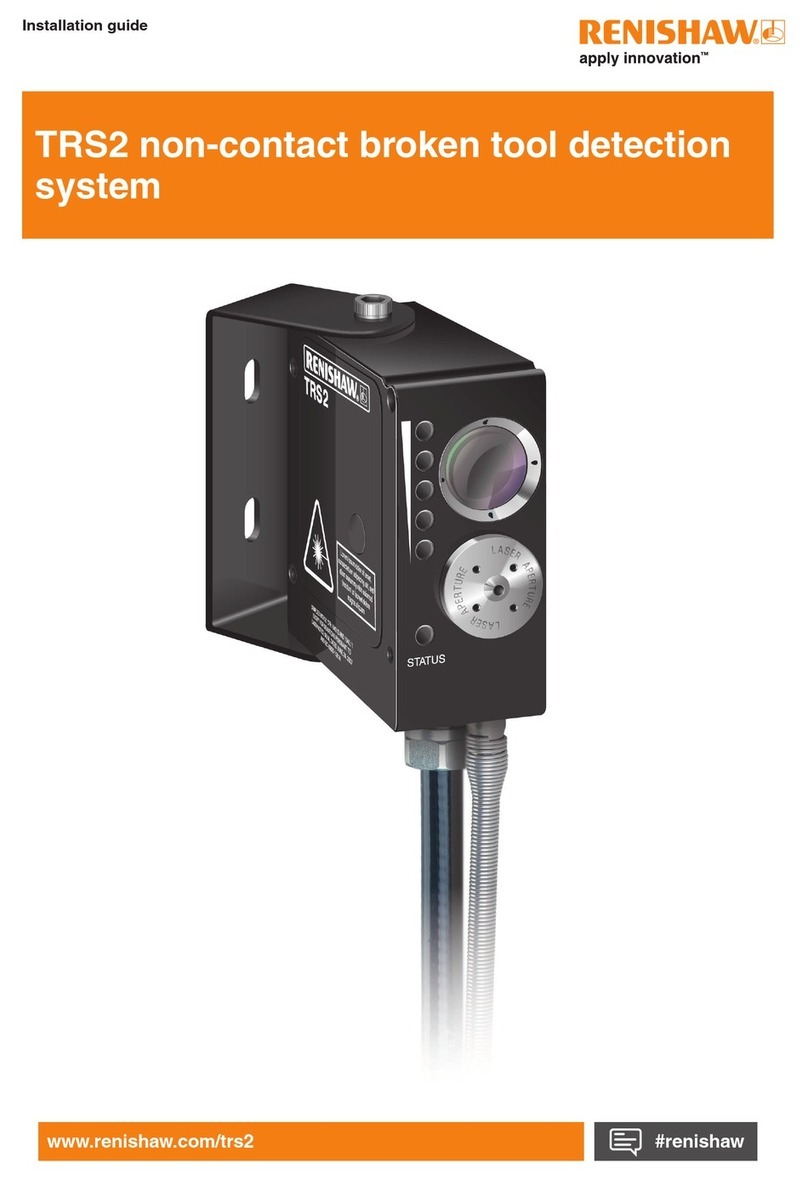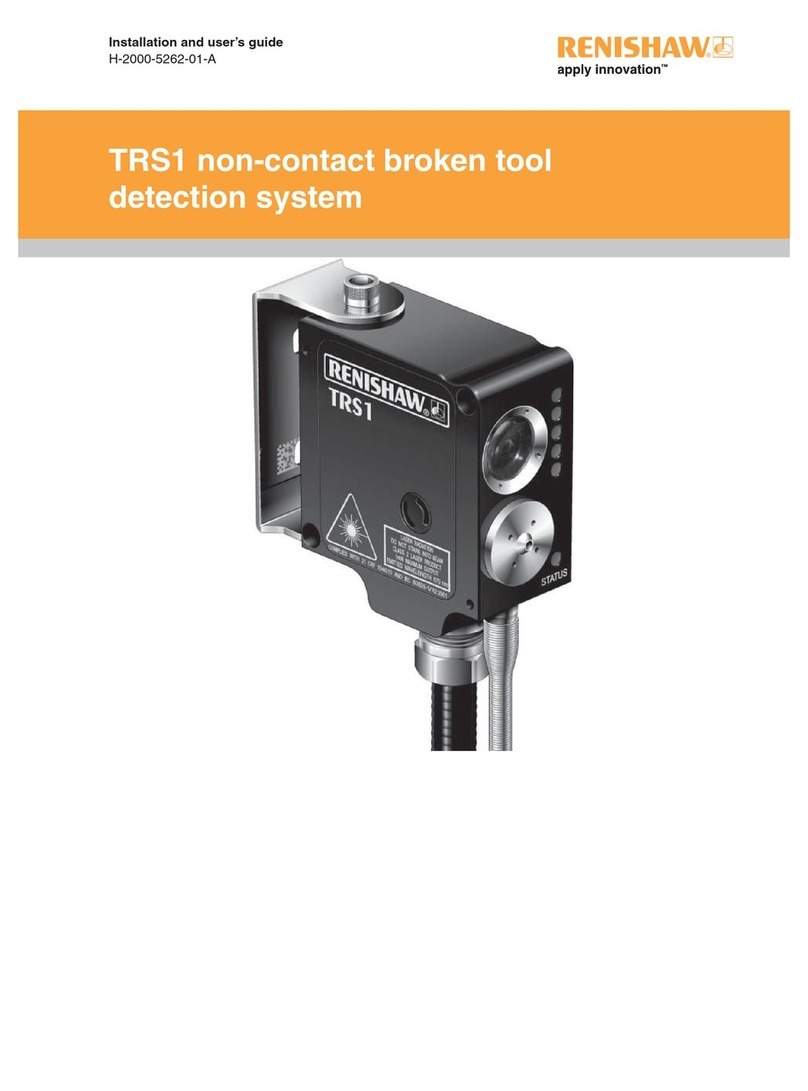
TRS2 installation guide
1.4
Before you begin
WARNINGS
Use of controls or adjustments or performance of procedures other than those specified within this
publication may result in hazardous radiation exposure.
Switch off electrical power to the TRS2 before carrying out maintenance.
When using the TRS2, basic safety precautions must always be followed to reduce the risk of fire,
electric shock and personal injury, including the following:
• Read all instructions before operating this product.
• The device must only be installed and used by competent, trained personnel.
• Use eye protection to protect against mechanical hazards, coolant and swarf.
• Avoid inhalation of coolant vapour from the machine tool.
• Do not block the air exiting from the laser aperture.
• Prevent direct exposure of the eyes to the laser beam.
• Ensure that the beam is not reflected into the eyes via any reflective surface.
• Prevent the laser beam from straying outside of the immediate work area. A beam terminator is
supplied with the TRS2, which may be fixed to the outside of the machine window for this purpose.
CAUTION – LASER SAFETY
The laser used in the Renishaw TRS2 non-contact broken tool detection system emits visible red
light at a wavelength of 670 nm and has a power output of less than 1 mW. The laser is driven by a
continuous pulse train running at a frequency of 125 kHz. The pulse duration is 2 µs and each pulse
has a maximum energy of 7.2 × 10-9 J.
The laser used is classified as a Class 2 product as defined by BS EN 60825-1:2014.
Complies with 21 CFR 1040.10 and 1040.11 except for conformance with IEC 60825-1 Ed.3., as
described in Laser Notice No.56, dated May 8, 2019.
The standard BS EN 60825-1:2014 directs to attach a laser warning label and explanatory label.
A warning label and explanatory label are permanently xed to one side of the housing, for more
information, see TRS2 dimensions and laser warning labels on page 2.1, “TRS2 basics”. An
adhesive warning label is also provided. Renishaw advise attaching this label to the outside of the
machine tool, in a visible location.
CAUTION: This equipment is rated to IK06 as dened by BS EN 62262:2002.





























